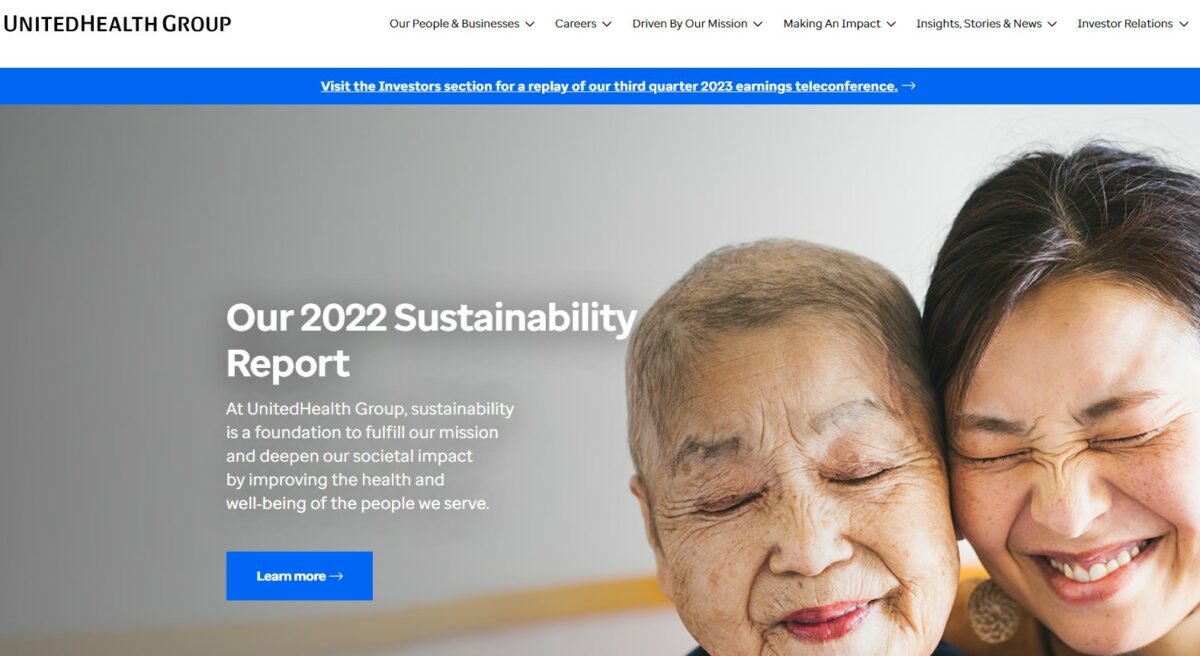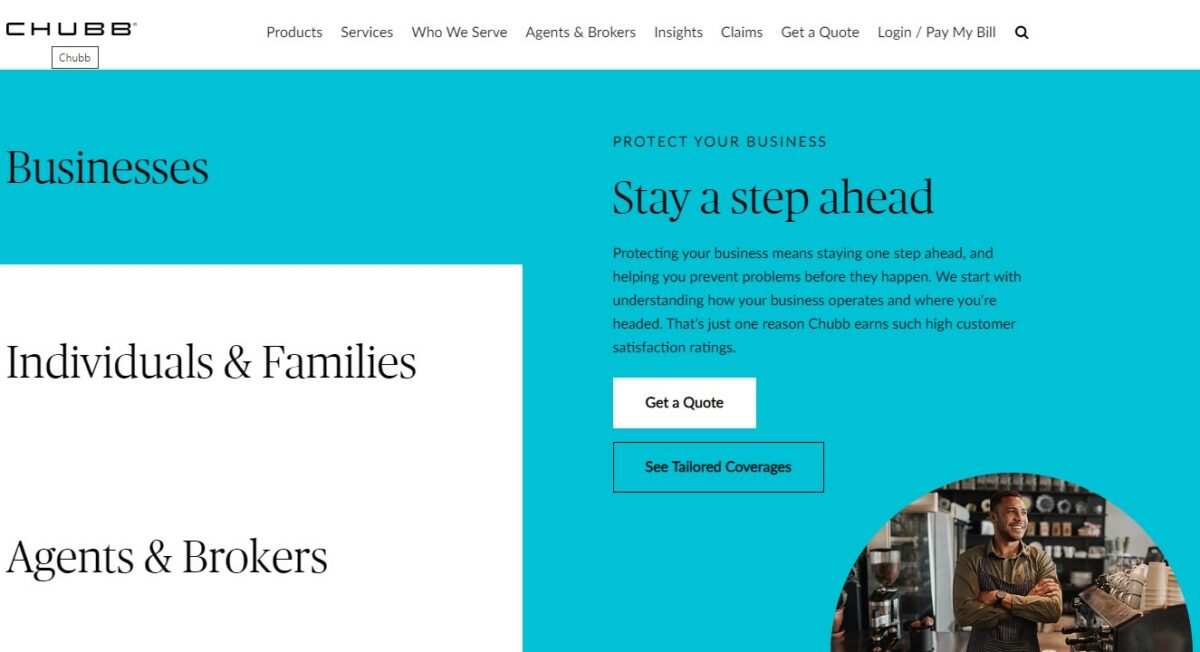In a world fraught with uncertainties, the insurance industry stands as a guiding light of stability and a financial safeguard to help counteract unforeseen events.
The insurance industry in the United States is a massive and dynamic force all across the globe.
This industry has a rich history and plays a pivotal role in the economic landscape of the nation.
Imagine, if you will, a world without insurance.
This would be a world of major financial losses caused by health emergencies, natural disasters, and other challenging life events.
Insurance is America’s cornerstone of modern society because it helps to mitigate risks by providing a safety net that protects people, businesses, and their assets.
It’s there to provide some level of peace of mind.
The insurance industry is a giant among global markets generating over $1 trillion every year in premiums and employing over 2.8 million people in the country.
This sophisticated network of insurers, agencies, and brokers safeguard people’s homes, vehicles, lives, and their businesses.
It’s one way they can ensure financial resilience in the face of adversity.
In this article, we will embark on a journey through the labyrinth of US insurance industry statistics by revealing key trends and enlightening you to the impact this industry has on the nation’s economy.
Furthermore, we will explore the various segments of the insurance industry from property and casualty, health and life coverage, and the overarching role of the industry, its market share, and its trajectories.
Be ready to be fascinated by the sheer magnitude of the United States insurance industry as we explore its nuances more closely.
Let’s dive into the insurance industry in the US.
Post Contents
- 1 Key Statistics
- 2 Top US Insurance Industry Statistics in 2024
- 2.1 1. Insurance premiums in the United States accounted for $1.4 trillion in 2021.
- 2.2 2. UnitedHealth Group had the largest share in 2021.
- 2.3 3. $7.34 billion was lost in the insurance industry in net underwriting
- 2.4 4. As of August 2023, the insurance industry employs over 2.95 million people.
- 2.5 5. Chubb was the number one carrier in the commercial P&C insurance group in 2021.
- 2.6 6. 3 out of every 4 Americans have a form of life insurance.
- 2.7 7. 65.23% of Life and Accident/Health insurance carriers wrote over $154.5 billion in direct premiums.
- 2.8 8. The United States is home to more than 5,900 insurance companies.
- 2.9 9. 16% of Americans claim to need life insurance, but don’t have it.
- 2.10 10. This generation is facing the toughest non-life insurance market.
- 2.11 11. Insurance underwriters are the highest paid in the industry.
- 2.12 12. In 2021, MetLife insurance ranked first in writing premiums in the L&H market.
- 2.13 13. 44% of American families would experience major financial challenges if the head of household died.
- 2.14 14. The Property & Casualty sector has a combined market share of 52.11% in the industry.
- 2.15 15. The average annual wage of those working in the insurance industry is $67,421.
- 2.16 16. Rising automobile insurance rates show that 45% consider going without it.
- 2.17 17. 68% of people with life insurance say they feel financially secure.
- 2.18 18. More than 300 million people in America have health insurance.
- 2.19 19. Berkshire Hathaway is the largest insurance company on the globe.
- 2.20 20. 215 million drivers in America have automobile insurance.
- 3 FAQs
- 4 Conclusion
Key Statistics
- Insurance premiums in the United States accounted for $1.4 trillion in 2021.
- UnitedHealth Group had the largest share in 2021.
- $7.34 billion was lost in the insurance industry in net underwriting.
- As of August 2023, the insurance industry employs over 2.9 million people.
- Chubb was the number one carrier in the P&C insurance group in 2021.
- 3 out of every 4 Americans have a form of life insurance.
- 65.23% of Life and Accident/Health insurance carriers wrote over $154.5 billion in direct premiums.
- The United States is home to more than 5,900 insurance companies.
- 16% of Americans claim to need life insurance, but don’t have it.
- This generation is facing the toughest non-life insurance market.
Top US Insurance Industry Statistics in 2024
1. Insurance premiums in the United States accounted for $1.4 trillion in 2021.
In 2021, the American insurance industry reported $1.4 trillion (USD) in net premiums written.
Moreover, 52% of them came from Life and Annuity insurers.
The other 48% were from Property and Casualty insurance.
(Zippia)
2. UnitedHealth Group had the largest share in 2021.

In 2021, UnitedHealth Group had the largest share in direct premiums at a 15% market share.
Reports from March 2023 revealed that MetLife is the largest life insurance company in the United States with a market capitalization of about $46 billion (USD).
(Statista)
3. $7.34 billion was lost in the insurance industry in net underwriting
This insurance industry statistic tells us that even the giants of industry can take a tumble sometimes.
In fact, between 2022 and 2023, the United States insurance industry suffered losses in consolidated net underwriting in the first quarter of 2023.
This represents the biggest loss in over a decade and the worst first quarter recorded to date.
(Deloitte)
4. As of August 2023, the insurance industry employs over 2.95 million people.
The Bureau of Labor Statistics revealed that the preliminary number of those employed in the insurance industry came to over 2.95 million people.
This is a slight increase over June 2023 which was over 2.94 million people employed in the insurance industry.
The most recent data on the employment and unemployment insurance carriers’ employment shows only a 1.4% unemployment rate.
(BLS)
5. Chubb was the number one carrier in the commercial P&C insurance group in 2021.

In terms of the Property & Casualty commercial sector of the American insurance industry, Chubb was ranked first with $22,323,908 million (USD) premiums written.
Moreover, Chubb was also ranked first in 2020 with over $19 million (USD) in premiums written.
Travelers insurance was second with over $19 million (USD) in 2021 in insurance premiums written.
(2022 Federal Insurance Office Annual Report)
6. 3 out of every 4 Americans have a form of life insurance.
From this data, we learn that most Americans do have some kind of life insurance coverage.
The statistics show that 3 out of 4 American adults have some type of life insurance coverage.
Americans can obtain their own individual life insurance and/or be covered by life insurance via their employer.
This could be why so many American adults have life insurance.
(Forbes Advisor)
7. 65.23% of Life and Accident/Health insurance carriers wrote over $154.5 billion in direct premiums.
In the Life and Accident and Health insurance sectors, 65.23% of companies reported writing direct premiums in excess of $154.5 billion (USD).
This information from the National Association of Insurance Commissioners (NAIC) confirms the fact that the American insurance industry makes a big impact on the nation’s GDP.
(NAIC)
8. The United States is home to more than 5,900 insurance companies.
In the United States, there are over 5,900 insurance companies.
New York alone has more than 547 insurance companies in the state.
Furthermore, Florida comes in second to New York with more than 440 insurance companies.
(WebFX)
9. 16% of Americans claim to need life insurance, but don’t have it.

The main reason that 16% of Americans say they need life insurance, but they don’t have it is due to the lack of funds.
This percentage translates to about 41 million people who are would-be insurance customers.
Over one-third of American families struggle to make ends meet in terms of paying their essential bills.
Therefore, life insurance is considered a luxury to them that they simply can’t afford.
(Zippia)
10. This generation is facing the toughest non-life insurance market.
According to Deloitte Insights, this generation is facing the harshest non-life insurance market in America.
In the non-life insurance sector, insurers are struggling to raise premium rates fast enough to meet the demand for the extreme record growth in expenses.
This is due to the catastrophic events that have occurred in the past couple of years plus inflation.
(Deloitte)
11. Insurance underwriters are the highest paid in the industry.
The Bureau of Labor Statistics revealed that in 2022, the job of insurance underwriters was the highest paid role in the industry at a mean of $83,380 (USD) and a median of $76,340 (USD) annually.
The median hourly wage for this role in 2022 came to $36.70 (USD) and the mean was $40.09 (USD).
(BLS)
12. In 2021, MetLife insurance ranked first in writing premiums in the L&H market.

In the U.S Department of the Treasury Federal Insurance Office annual report, MetLife reported over $97 million (USD) in premiums written.
MetLife was also ranked at number one in 2020 with over $103 million (USD) in written premiums for the year.
MetLife is part of the Life and Health insurance market.
(2022 Federal Insurance Office Annual Report)
13. 44% of American families would experience major financial challenges if the head of household died.
In America, the head of household is used to describe the primary wage earner of the household for tax purposes.
Therefore, this statistic shows that if the primary wage earner died, the household will experience financial issues within 6 months if they have no life insurance coverage.
Another 28% would reach this point within one month.
(Forbes Advisor, LIMRA)
14. The Property & Casualty sector has a combined market share of 52.11% in the industry.
NAIC revealed that the P&C (property and casualty) sector of the insurance industry has a combined market share of 52.11%.
This sector of the insurance market covers commercial auto, personal auto, medical professional liability, workers’ compensation, homeowners, and other forms of liability with the exception of auto liability insurance.
(NAIC)
15. The average annual wage of those working in the insurance industry is $67,421.
According to our sources, the average annual earnings of people who work in the insurance industry come to $67,421 (USD).
That said, the salaries of people working in this industry widely varies and relies heavily upon their role, location, education, experience level, and other factors.
The range for those working in the insurance field falls between $22,000 and $144,000.
(Zippia)
16. Rising automobile insurance rates show that 45% consider going without it.

In America, most states require that you have insurance on your automobile.
For those driving uninsured, if they get caught, they could face heavy fines and other consequences.
Still, with the rise in automobile insurance, 45% of drivers between 18 and 34 years old said they have considered going without auto insurance as a result.
Moreover, 17% said they are currently driving uninsured.
(Deloitte)
17. 68% of people with life insurance say they feel financially secure.
Approximately two-thirds of people who have life insurance coverage revealed that they feel financially secure in one study.
The exact figure is 68% of people who have life insurance compared to 47% of those without life insurance.
(Forbes Advisor, LIMRA²)
18. More than 300 million people in America have health insurance.
This statistic reveals that over 300 million individuals in the United States have health insurance coverage of some kind.
This can mean they get it through their employer as part of their work benefits or they pay for it out of pocket for private coverage or employer coverage.
(WebFX)
19. Berkshire Hathaway is the largest insurance company on the globe.
The biggest insurance company in the world is Berkshire Hathaway which is headquartered in the United States.
This company outpaces all others in terms of revenue and is worth $714 billion compared to the next biggest, United Healthcare at $448 billion.
(Zippia)
20. 215 million drivers in America have automobile insurance.

In the United States, there are 215 drivers who carry automobile coverage.
Moreover, one out of eight drivers have no coverage, and 2.2 million people are injured in automotive crashes in America.
Furthermore, the auto insurance industry is worth $316 billion (USD), and the average cost of auto insurance coverage is $1,600 annually.
(WebFX)
FAQs
How big is the US insurance industry?
The insurance industry in the United States is the largest on the globe.
The direct premiums alone account for in excess of $1 trillion (USD) as of 2022.
Additionally, this industry employs over 2.8 million people while significantly contributing to the country’s GDP.
What are the three primary types of US insurance?
In America, the insurance industry embraces a large scope of insurance products and services including:
1. Life Insurance: Life insurance is coverage that provides financial protection in case of a policyholder’s death.
2. Health Insurance: This is insurance that covers various percentages of medical expenses and other related costs.
3. Property and Casualty Insurance: Property and Casualty insurance covers losses due to property and liability for injury or accident.
What are some of the largest American life insurance companies?
Based on the number of premiums written, here are the top five American insurance companies as of 2022:
1. Berkshire Hathaway
2. UnitedHealth Group
3. State Farm
4. Allstate
5. Progressive
What are some pivotal trends impacting the US insurance industry?
After much digging, we discovered these key trends that are impacting the insurance industry in America:
1. Digitalization: Insurers are constantly adopting new digital technologies to streamline their operations, develop innovative products, and to enhance the customer experience.
2. Data Analytics: Usage of data analytics is transforming aspects of the American insurance industry in terms of underwriting, risk assessment, and fraud detection. Overall, this is helping the industry to personalize efficient insurance solutions.
3. Insurtech: The emergence of insurtech is disrupting conventional insurance models and is offering new products and distribution channels.
As you can see, the American insurance industry is undergoing major changes driven by evolving consumer expectations, technological advancements, and emerging risks.
Conclusion
By now, we can all see the significance of the overall U.S. insurance industry and how it impacts people in America.
Today, we have learned that millions of Americans are covered by insurance of some kind and that Berkshire Hathaway is the globe’s largest insurer.
There are so many statistics about the insurance industry in America that it’s hard to cover everything in one article.
Much of this is true because there are so many forms of insurance with statistics of their own.
We hope you feel more enlightened and informed after reading these US insurance industry statistics.






























